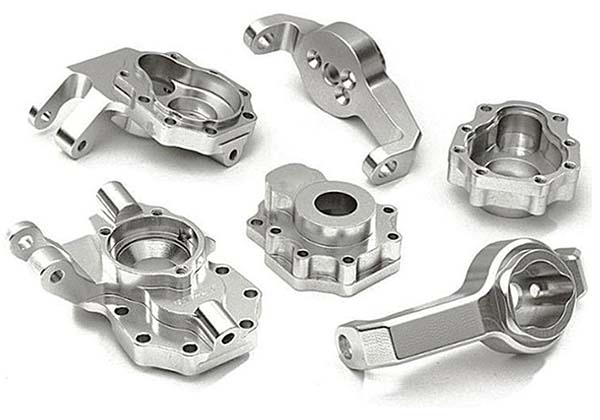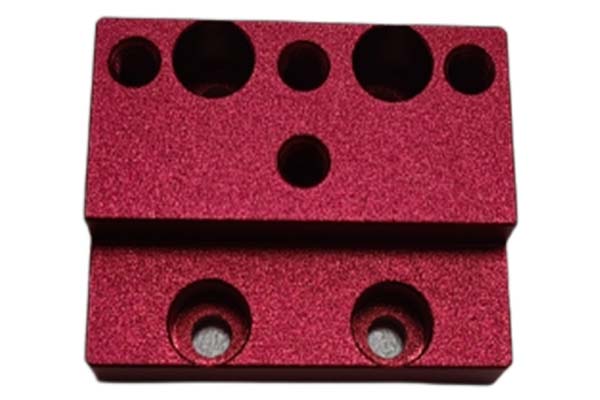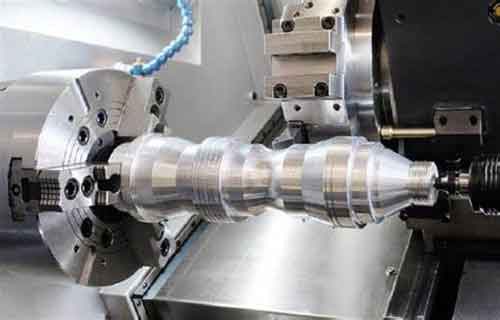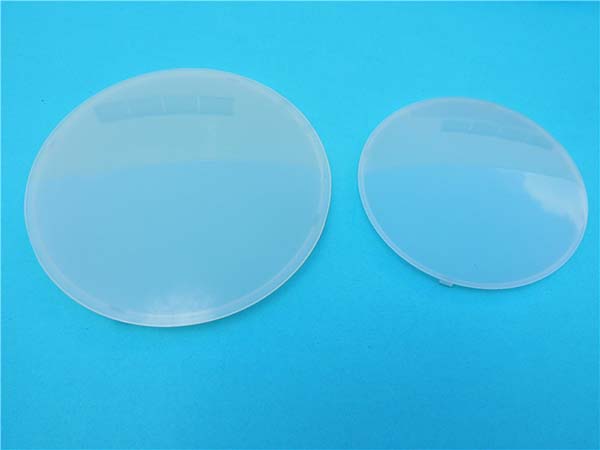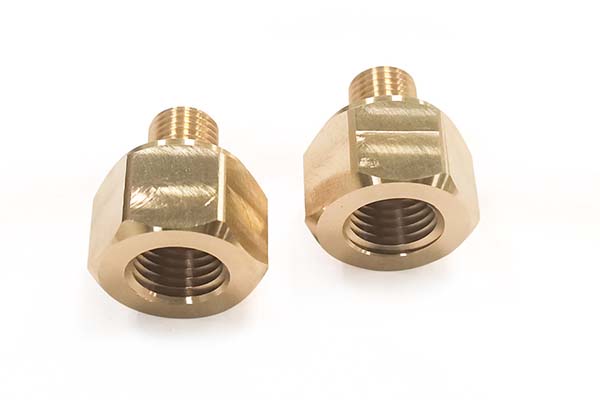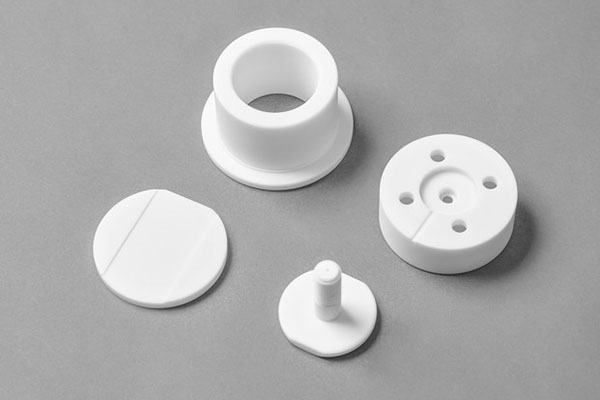Milling Tolerance: An Overview
In the intricate world of manufacturing, milling tolerance stands as a cornerstone concept. Milling tolerance can be defined as the allowable deviation from a specified dimension in a milling process. It's the range within which the final product's dimensions can vary while still being considered acceptable for its intended use.
To put it simply, if you're manufacturing a part that is supposed to have a length of 50 millimeters, the milling tolerance might be set at ±0.05 millimeters. This means that a part with a length between 49.95 and 50.05 millimeters would be considered within tolerance.
The importance of milling tolerance in manufacturing cannot be overstated. In industries such as aerospace, where precision is non - negotiable, tight milling tolerances ensure the safety and reliability of aircraft components. A minor deviation in the milling of a turbine blade, for example, could lead to imbalances during operation, potentially causing catastrophic failures.
In the medical field, components for surgical instruments and implants must meet extremely tight tolerances. A poorly milled implant might not fit correctly in the patient's body, leading to complications and the need for additional surgeries. Even in the electronics industry, where miniaturization is key, accurate milling tolerances are crucial. Tiny components need to fit precisely together to ensure the proper functioning of devices like smartphones and laptops.
Factors Affecting Milling Tolerance
Milling Machine Precision and Rigidity
The precision and rigidity of the Yigu Technology milling machine are fundamental factors in determining milling tolerance. A high - precision milling machine can achieve more accurate and consistent results.
Machine Age and Condition: Older milling machines may have components that have suffered from wear and tear over time. For example, the guideways of an old machine might have grooves or uneven surfaces due to long - term use. According to industry studies, a milling machine that is over 10 years old without proper maintenance can have a positional accuracy deviation of up to ±0.1mm, which is significantly higher compared to a new machine with an accuracy of ±0.01mm or better. This deviation can directly translate into larger milling tolerances as the machine is unable to position the cutting tool precisely relative to the workpiece.
Spindle Accuracy: The spindle is the heart of the milling machine, and its accuracy is crucial. A spindle with high rotational accuracy can ensure that the cutting tool moves in a stable and consistent path. Spindle runout, which is the deviation of the spindle's actual rotation axis from its ideal axis, can cause the cutting tool to deviate from the intended cutting path. A spindle with a runout of more than 0.005mm can lead to surface roughness and dimensional inaccuracies in the milled part. High - end milling machines often use precision - balanced spindles and advanced bearing systems to minimize runout and maintain high - level spindle accuracy.
Table Rigidity: A rigid table is essential for maintaining the stability of the workpiece during machining. If the table is not rigid enough, vibrations can occur during the milling process. These vibrations can cause the cutting tool to chatter, leading to inconsistent cuts and increased milling tolerances. For instance, in a study on milling large - sized aluminum workpieces, it was found that when using a milling machine with a relatively flexible table, the surface roughness of the milled parts increased by 30% compared to using a machine with a highly rigid table. This increase in surface roughness is often accompanied by dimensional variations, as the unstable table allows the workpiece to move slightly during cutting.
Tooling and Cutter Selection
The choice of cutting tools and their condition can have a profound impact on milling tolerance.
Tool Material: Carbide tools are widely preferred in milling operations, especially when dealing with harder materials. Their high hardness and wear resistance allow for more precise cutting. For example, when milling hardened steel with a hardness of HRC 40 - 50, carbide tools can maintain their cutting edge integrity for a much longer time compared to high - speed steel tools. High - speed steel tools may wear out rapidly, leading to changes in the cutting geometry and resulting in larger milling tolerances. In fact, carbide tools can reduce the tolerance deviation by up to 50% when milling such hard materials, as they can maintain a more consistent cutting edge throughout the machining process.
Tool Geometry: The shape and flute design of the cutting tool play a significant role in material removal rates and surface finish. A tool with a proper helix angle and rake angle can improve chip evacuation and reduce cutting forces. For example, a ball - nose end mill with a large helix angle is more effective in milling complex 3D surfaces as it can cut more smoothly and reduce the formation of scallops on the surface. A study showed that using a ball - nose end mill with a 45 - degree helix angle reduced the surface roughness by 20% compared to a tool with a 30 - degree helix angle when milling a titanium alloy. This improvement in surface finish is also related to better control of the milling tolerance, as a smoother surface indicates more precise cutting.
Tool Condition: Worn or damaged tools are a common source of milling tolerance issues. As a tool wears, its cutting edge becomes dull, which increases cutting forces and can lead to inaccurate cuts. A worn - out end mill with a significant amount of flank wear may cut deeper than intended, causing dimensional errors in the workpiece. Regular inspection and timely replacement or sharpening of tools are essential. In a production environment, it is recommended to set up a tool management system that tracks the usage time and cutting performance of each tool. For example, a carbide end mill may be replaced after 8 - 10 hours of continuous use in a high - volume milling operation to ensure consistent milling tolerance.
Workpiece Material Properties
The properties of the workpiece material can greatly influence milling tolerance.
Material Hardness: Harder materials require more force to cut, which can affect the milling process. When Yigu Technology milling a hard material like tungsten carbide (with a hardness of around 2000 - 2500 HV), slower cutting speeds are typically required. If the cutting speed is too high, the tool may wear rapidly, and the cutting forces can cause the workpiece to deform slightly. For example, a study on milling tungsten carbide showed that increasing the cutting speed by 20% beyond the recommended value led to a 15% increase in the milling tolerance due to excessive tool wear and workpiece deformation. Using more robust tools and appropriate cutting parameters is crucial when dealing with hard materials to maintain the desired milling tolerance.
Material Stability: Materials that are prone to deformation or thermal expansion can pose challenges in milling. Aluminum alloys, for instance, have a relatively high coefficient of thermal expansion. During milling, the heat generated by the cutting process can cause the workpiece to expand. If the cutting parameters are not adjusted accordingly, this expansion can lead to dimensional inaccuracies. In a milling operation of an aluminum alloy part, if the cutting temperature rises by 50°C, the part can expand by up to 0.1mm per 100mm of length. To counteract this, coolant can be used to keep the workpiece temperature stable, and the milling program can be adjusted to account for the thermal expansion.
Surface Finish: The initial surface condition of the workpiece can also impact the final milling tolerance. A rough - surfaced workpiece may require more material to be removed to achieve the desired finish, which can increase the chances of dimensional errors. Additionally, if the workpiece has surface defects such as scratches or pits, these can affect the cutting process and lead to inconsistent milling results. For example, when milling a workpiece with pre - existing surface scratches, the cutting tool may experience uneven cutting forces as it passes over the scratches, resulting in a deviation in the milling tolerance of up to ±0.05mm.
Machining Parameters (Feed Rate, Spindle Speed, Depth of Cut)
Optimizing machining parameters is crucial for achieving tight milling tolerances.
Feed Rate: The feed rate is the speed at which the tool moves through the material. A higher feed rate can increase productivity but may sacrifice precision. When the feed rate is too high, the cutting tool may not have enough time to remove the material properly, leading to a rough surface finish and larger milling tolerances. For example, in a milling operation of a stainless - steel workpiece, increasing the feed rate from 500mm/min to 800mm/min without adjusting other parameters led to an increase in surface roughness from Ra 0.8μm to Ra 1.6μm and a corresponding increase in the milling tolerance by about ±0.03mm. It is important to find the right balance between feed rate and precision based on the workpiece material, tool type, and desired surface finish.
Spindle Speed: The Yigu Technology spindle speed, or the rotational speed of the cutting tool, also affects milling tolerance. Higher spindle speeds can improve surface finish as the cutting tool makes more cuts per unit length. However, if the spindle speed is too high, it can generate excessive heat, which may cause the tool to wear prematurely and the workpiece to deform. For example, when milling a copper alloy, increasing the spindle speed from 2000 rpm to 4000 rpm without proper cooling led to a 30% reduction in tool life and a 10% increase in the milling tolerance due to thermal expansion of the workpiece.
Depth of Cut: The depth of cut refers to the amount of material removed in each pass. Shallow cuts generally reduce tool wear and improve accuracy but may increase machining time. In a milling operation for a high - precision component, reducing the depth of cut from 2mm to 0.5mm can improve the dimensional accuracy by reducing the cutting forces and minimizing the risk of tool deflection. However, this also means that more passes are required, which can increase the overall machining time. A balance needs to be struck between depth of cut, machining time, and milling tolerance requirements. For example, in a production setting where both accuracy and efficiency are important, a medium - depth cut of around 1 - 1.5mm may be chosen for a particular workpiece and milling operation.
The Impact of These Factors Case Studies
- Aerospace Component Manufacturing: A leading aerospace company was manufacturing turbine blades for jet engines. They initially used an older milling machine with a spindle runout of 0.01mm. The resulting milling tolerance for the blade's airfoil shape was ±0.1mm. After upgrading to a high - precision milling machine with a spindle runout of 0.002mm and improved table rigidity, the milling tolerance was reduced to ±0.03mm. This improvement in tolerance not only enhanced the aerodynamic performance of the turbine blades but also increased their operational lifespan by 20%, as the reduced dimensional variations led to less stress concentration during high - speed rotation.
- Medical Implant Production: In the production of hip implants, a medical device manufacturer was facing issues with milling tolerance. The initial choice of high - speed steel cutting tools for milling the titanium alloy implants led to significant tool wear. As a result, the diameter tolerance of the implant's stem was ±0.15mm, which was close to the upper limit of the acceptable tolerance range. After switching to carbide tools, the tool wear was greatly reduced, and the diameter tolerance was tightened to ±0.05mm. This improvement in tolerance ensured a better fit of the implant in the patient's hip joint, reducing the risk of implant loosening and the need for revision surgeries. The number of post - operative complications related to implant fit decreased by 30% after the tool change.
- Automotive Part Milling: An automotive parts manufacturer was milling aluminum alloy engine blocks. They experimented with different machining parameters. When they used a high feed rate of 1000mm/min, a spindle speed of 3000 rpm, and a depth of cut of 3mm, the surface roughness of the milled parts was Ra 2.5μm, and the dimensional tolerance for the cylinder bores was ±0.1mm. After optimizing the parameters to a feed rate of 600mm/min, a spindle speed of 4000 rpm, and a depth of cut of 1.5mm, the surface roughness improved to Ra 1.2μm, and the dimensional tolerance was reduced to ±0.05mm. This optimization not only improved the quality of the engine blocks but also increased the production efficiency, as the parts required less secondary finishing operations. The production throughput increased by 15% due to the improved milling process.
Conclusion
In Yigu Technology conclusion, milling tolerance is a complex and multi - faceted aspect of the manufacturing process, influenced by a plethora of factors. The precision and rigidity of the milling machine, the choice of tooling and cutters, the properties of the workpiece material, and the machining parameters all play crucial roles in determining the final milling tolerance.
Controlling milling tolerance is of utmost importance in manufacturing. It directly impacts the quality and consistency of finished parts. Components that meet tight tolerances are more likely to function as intended, ensuring the reliability and long - term performance of products. In addition, tight tolerances contribute to cost efficiency by minimizing the need for rework and secondary operations, and they enhance production throughput by enabling seamless assembly.

